Appendix 4 Heterogeneity of treatment effect across studies
Page last updated: September 2016
This appendix provides possible sources of heterogeneity between trials, or when comparing one jurisdiction with another. It is a useful reference for describing potential confounders when combining trials in a meta-analysis, performing indirect comparisons of randomised trials or network meta-analyses, or comparing variables from the clinical trial setting with the population in the economic model.
Make comparisons across trials or jurisdictions on the basis of the distributions or proportions of each characteristic rather than simply identifying whether there is a representation of each characteristic in each trial or jurisdiction. For example, two trials may include patients aged 20–60 years, thus, the population may appear homogeneous. However, if one trial has a much lower mean age, or the proportion of patients younger than 40 is far higher than for the other trial, this may cause heterogeneity and violate the assumption of transitivity.
Table A4.1 provides a list of important factors to consider and may, where appropriate, be used as a template for the presentation of factors across trials or jurisdictions.
If there is a risk of heterogeneity because the trials have different follow-up periods, present the pooled incidence rate differences.
|
Category |
Factor |
Trial 1 |
Trial 2 |
Trial 3 |
|---|---|---|---|---|
|
Different quality of methods of trials |
Adequate concealment of randomisation |
[add] |
[add] |
[add] |
|
Blinding |
[add] |
[add] |
[add] |
|
|
Duration of follow-up |
[add] |
[add] |
[add] |
|
|
Loss to follow-up |
[add] |
[add] |
[add] |
|
|
Crossover |
[add] |
[add] |
[add] |
|
|
Confounding factors in relation to participant populations |
Age |
[add] |
[add] |
[add] |
|
Sex |
[add] |
[add] |
[add] |
|
|
Genetic variation |
[add] |
[add] |
[add] |
|
|
Diagnostic workup |
[add] |
[add] |
[add] |
|
|
Intensity of surveillance |
[add] |
[add] |
[add] |
|
|
Severity of disease or condition |
[add] |
[add] |
[add] |
|
|
Physiological reserve |
[add] |
[add] |
[add] |
|
|
Stage or duration of disease or condition |
[add] |
[add] |
[add] |
|
|
Previous therapy |
[add] |
[add] |
[add] |
|
|
Coexisting disease or condition |
[add] |
[add] |
[add] |
|
|
Background therapy of concomitant treatments/advances in standard of care |
[add] |
[add] |
[add] |
|
|
Confounding factors in relation to circumstances |
Health systems |
[add] |
[add] |
[add] |
|
Geography |
[add] |
[add] |
[add] |
|
|
Setting in hospital or ambulatory care |
[add] |
[add] |
[add] |
|
|
Date of trials |
[add] |
[add] |
[add] |
|
|
Different treatment |
Dose |
[add] |
[add] |
[add] |
|
Duration |
[add] |
[add] |
[add] |
|
|
Timing |
[add] |
[add] |
[add] |
|
|
Stopping or continuation criteria |
[add] |
[add] |
[add] |
|
|
Different outcome measures and methods of statistical analysis |
Definition of outcome(s) |
[add] |
[add] |
[add] |
|
Rating instrument |
[add] |
[add] |
[add] |
|
|
Frequency of measurement |
[add] |
[add] |
[add] |
|
|
Start point of measurement against duration or progression of disease or treatment, especially in time-to-event analyses |
[add] |
[add] |
[add] |


